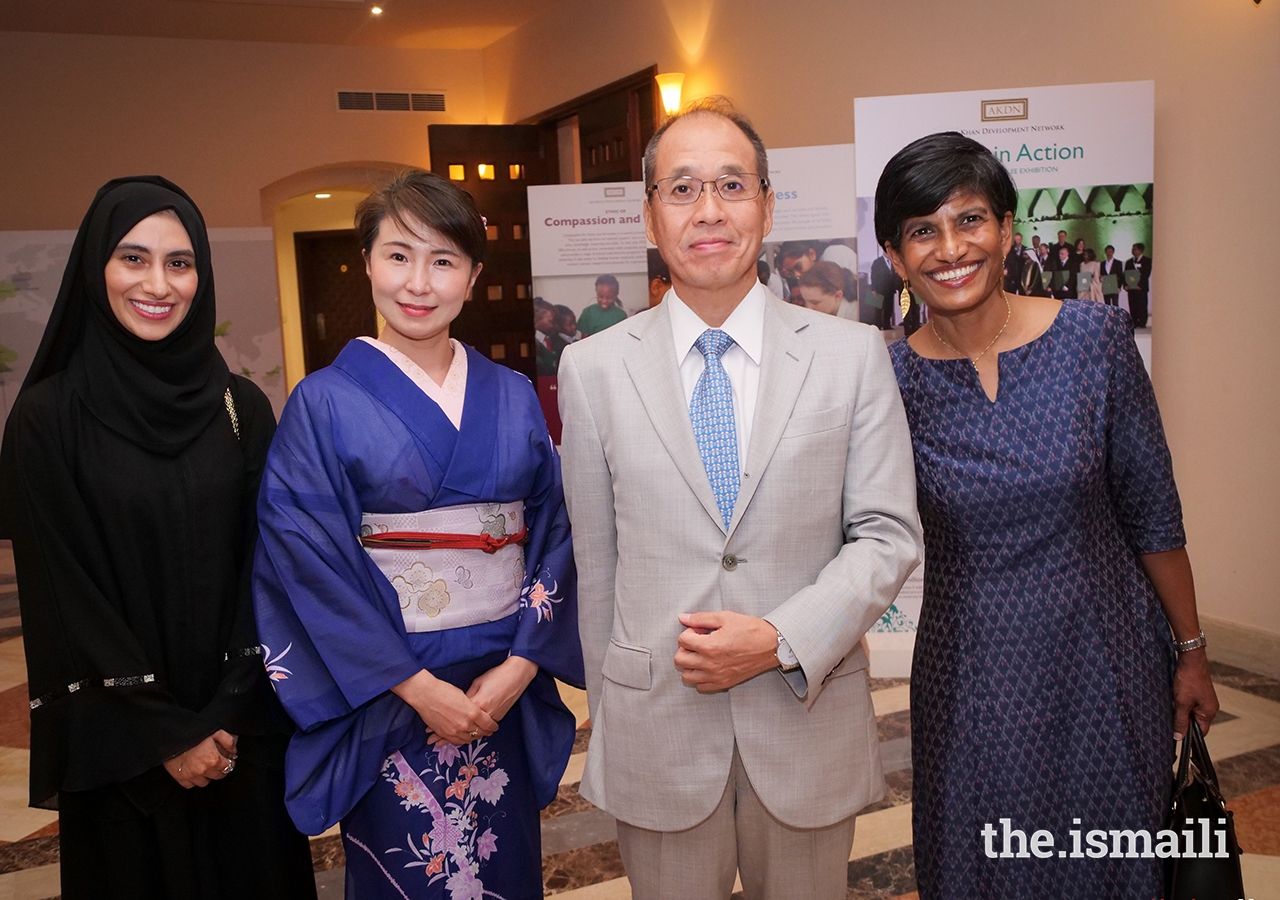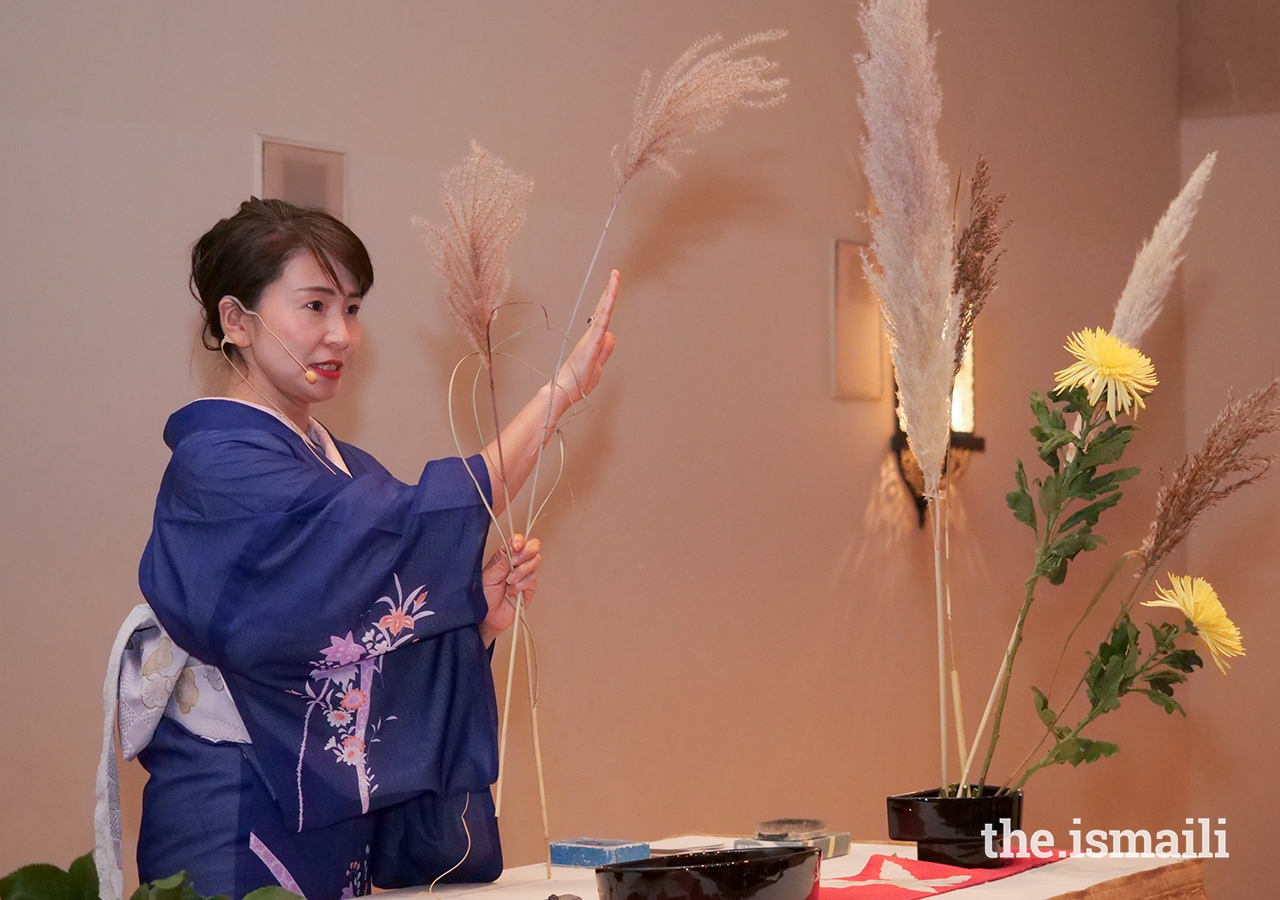A central purpose of the Ismaili Centres around the world is to encourage mutual exchanges and understanding between diverse peoples, communities and faiths. In this spirit of friendship and dialogue, the Ismaili Council for the UAE invited Ma Harue Oki to the Ismaili Centre Dubai to share the ancient Japanese art of Ikebana.
Ms Harue Oki, an art enthusiast and instructor, provided the audience an insight into the art of Ikebana. This seventh-century art of flower arranging was first introduced to Japan from China and Korea, as offerings in Buddhist temples, subsequently evolving into a formalised practice during the Muromachi period, around the 15th to 16th century.
Ikebana is meant to be practiced while in a meditative state, so as to observe and focus on the beauty of nature and gain inner peace. It is based on seven basic principles, namely; minimalism, shape, line, form, humanity, aesthetics, and balance – some of which are also reflected and manifested in the architecture of the Ismaili Centre.
Ms Oki then invited eight volunteers from the audience to create their own arrangements using this unique technique. She noted that eight different versions of the arrangements were created, despite having received the same set of instructions and materials by all the participants. She noted that it represented a very practical lesson in the multiplicity of human perception and diversity of expression.
“And this, our life, exempt from public haunt, finds tongues in trees, books in the running brooks, sermons in stones, and good in everything.”
William Shakespeare
Nature has a way of inspiring each one of us in unique ways. A child’s first drawing usually reflects something from nature, while artists recreate fields using colours from their pallets. We are constantly stimulated by natures’ activities, be it its beauty, or cold chilled winds, while some are mesmerised by the sunset as they hear the evening Adhan (call to prayer).
Springtime is an especially symbolic period of the year where the brilliance of nature unfolds in a multitude of ways. As we celebrate Navroz and the blooming of spring this month, we celebrate the generous offering of nature to humanity.











